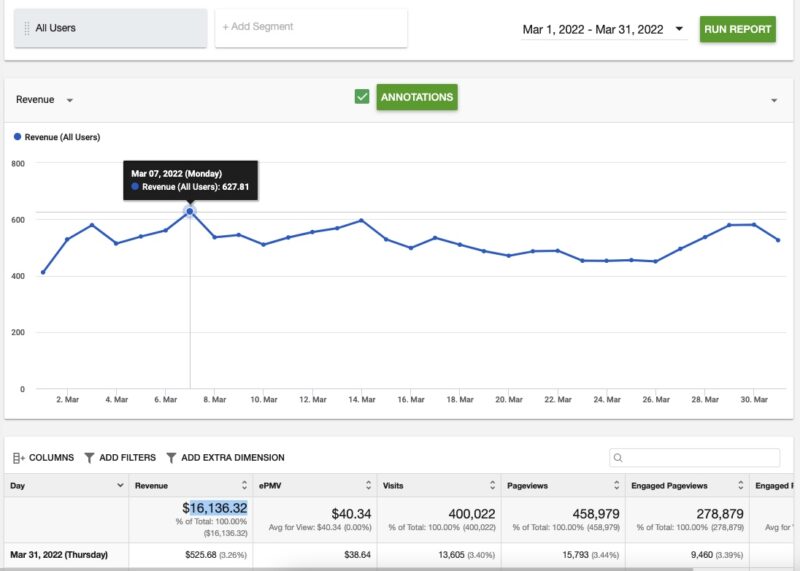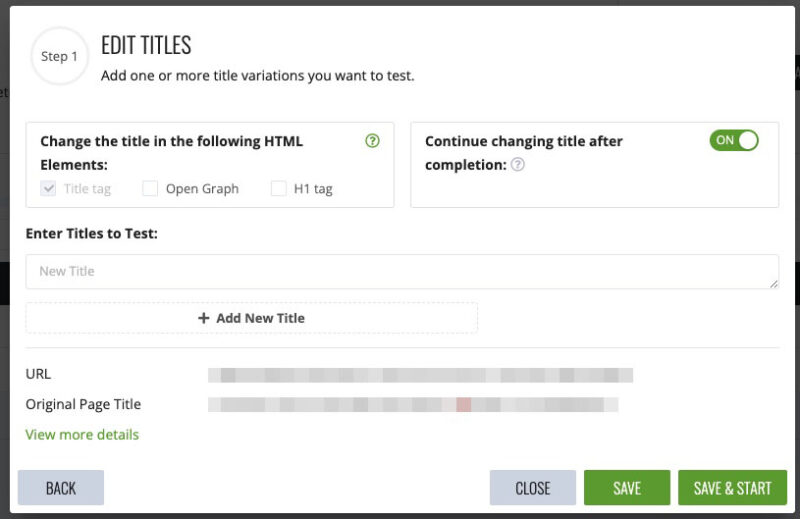Online advertising is evolving much faster than we think. In an era where privacy is a pressing concern for everyone, ads are a tricky conundrum for publishers. On the one hand, you’d want ads to help boost user engagement and interactions on your site. But, how can you manage it while also being attractive enough to matter? Well, Ezoic vs Infolinks is trying to solve this.
Most people couldn’t care less about online ads. For a lot of folks, it’s just something that they have to stare at while browsing the internet. But surely, it’s possible to create ads that provide value for their time? Ads that may interest your readers, with context that’s relevant for them, or offer something that they might want? Ultimately, it’s a win-win for you and your users.
In Ezoic’s case, they’ve employed the latest generation of AI and machine learning that’ll learn and understand your audience. Thus, dynamically serving them ads they might value the most. For Infolinks, they use data science to understand just what your content and users like while offering them contextually relevant ads. So, let’s look a bit closer at Ezoic vs Infolinks…
What Is Ezoic?
First off, let’s begin looking at the former in Ezoic vs Infolinks. Ezoic is among the top premium ad providers today, serving more than 10,000 publishers worldwide. Their specialty, compared to other ad providers, is the clever use of AI and machine learning for display advertising. That allows them to understand user behavior and how they’d interact with the ads on your site.
In doing so, Ezoic would dynamically calibrate the ad layout for each person to best tailor the experience. As such, Ezoic’s AI and machine learning computation would alter the placement, density, sizing, and type of ads that appear. This not only helps with contextually targeting a user and what they might be looking for. Yet, it also helps to improve the user experience.
Ezoic has other benefits too, such as…
- Uses machine learning to understand the most optimal ad layout and understand the context for those ads. It could change this for each user too, helping to tailor a bespoke experience.
- Automated ad management, where you don’t have to fiddle around with it too much. Once the ads have been set up, just sit back as Ezoic will re-optimize the ad layout for you.
- A plethora of add-on services and tools besides monetization through ads. Ezoic offers you the ability to optimize on-page SEO, host videos, or speed up your website’s page loading times.
- Provides access to extensive data analytics for publishers to study. Through their dashboard, you can find metrics for gauging site traffic, earnings, performance, and much more.
- A wide pool of premium advertisers, as Ezoic will connect your site to high-paying advertisers. This also includes programmatic header bidding and more to eke out higher ad revenues.
What Is Infolinks?
With that out of the way, how about the latter half of Ezoic vs Infolinks? Currently, Infolinks is the world’s 3rd largest publisher marketplace, with more than 350,000 publishers. Their focus leans towards creating adtech solutions that could best attract attention and viewability from your site’s audience. In other words, showing adverts that folks would actually want to see.
This is done with in-depth data science models, allowing Infolinks to show contextually relevant ads for your site’s visitors. In addition to their keyword targeting, they’ve perfected their ads to ensure high impressions from users. Thus, granting publishers higher ad revenues. Yet, with the ability to provide a more interactive and engaging user experience for your audience.
Besides those, Infolinks has other upsides, too…
- Scans your content for valuable and important keywords. With this, Infolinks would then serve ads that match those keywords, which would provide more relevant ads for your users.
- Offers a variety of ad unit types, such as mobile-focused ads or intermission-style ads between pageviews. They also have a sidebar-style ad that covers up any remaining screen real estate.
- Designs the layout of ads to ensure that they have a much higher chance of being viewed and interacted with. This helps to cut down on banner blindness among your site’s visitors.
- Allows extensive customizability with the ad formats on your page. This doesn’t just include ad banners, as Infolinks also allows you to embed ads as hyperlinks within a body of text.
- Easily accessible for even smaller publishers, as they don’t have a minimum traffic requirement to join. Although, it’s recommended that you have at least 10,000 monthly pageviews.
What Are The Key Differences Between Ezoic Vs Infolinks?
Thus far, we’ve looked at how Ezoic vs Infolinks work. Here’s how they differ…
Minimum Requirements
Both Ezoic vs Infolinks is quite approachable for tinier publishers. Ezoic has its Access Now program, where even publishers with fewer than 10,000 monthly pageviews can monetize on Ezoic. Infolinks, on the other hand, doesn’t even have a traffic requirement. However, 10,000 monthly pageviews as a minimum are advised for more effective and optimal monetization.
Setup And Integration
For non-tech-savvy publishers, Ezoic and Infolinks do make site integration a breeze. Infolinks’ setup process is especially easy, requiring that you only need to copy over an HTML code before ads are served. Ezoic isn’t hard either, as cloud and nameserver integration won’t cost you any significant headaches. However, Ezoic does grant you more configurability over the ads.
Pricing And Fees
Ezoic vs Infolinks is similar in that they adopt a revenue-sharing model to charge publishers for using their services. In Ezoic’s case, they’ll take a 10% cut of all ad revenues monetized on Ezoic. Nonetheless, Infolinks is much more costly. They’ll take a 35% cut of all ad revenues. It then leaves publishers with just 65% of their ad earnings, compared to Ezoic’s 90%.
Ad Revenues
Speaking of ad revenues, Ezoic easily out-earns Infolinks in terms of how much you can earn. This is primarily due to the relevancy of the ads. Comparatively, Infolinks’ ads are somewhat irrelevant in many browsing sessions compared to Ezoic. The latter uses machine learning as well as AI to serve contextually relevant ads for your users that they may be interested in.
Ad Format And Layout
If you’re concerned about the user experience, then Ezoic might be a better fit for your site. In testing Infolinks, their idea of optimizing the ad layout can be rather intrusive and spammy at times. In comparison, Ezoic could be much more subtle about calibrating how ads can appear on your site. Plus, you get more granular control with Ezoic, if you want to change it up.
Ad Unit Types
Both Ezoic vs Infolinks offers publishers a wide variety of ad unit types to play around with. It’s mostly conventional with Ezoic, which could show native ads, display ads, sponsored ads, and perhaps an anchor ad or two. Infolinks provides a unique approach, such as embedding ads in the text itself as hyperlinks. They also have intermission-style ads between pageviews, too.
Data Analytics
Ezoic also beats out Infolinks when it comes to data analytics. Their analytics dashboard has a lot more depth to it. As a result, publishers can get a detailed breakdown of metrics including traffic, revenues, page performance, and more. On the flipside, Infolinks’ analytics dashboard offers greater simplicity. But this comes at the cost of having only a few metrics to work with.
Payment Timeframe
If you need to withdraw your ad revenues in a hurry, Ezoic could do it faster. They have a NET 30-day payment window for ad earnings. This means that, for example, January’s ad revenue will be paid out by the end of February. Still, Infolinks isn’t too far behind, as they adopt a NET 45-day timeframe. Therefore, you’ll have to wait another half a month before getting paid.
Which Is Better, Ezoic Vs Infolinks?
Well, we’ve looked at the differences between Ezoic vs Infolinks, so it comes down to finding a winner. Based on what we’ve learned, Ezoic is undoubtedly a superior ad provider. This would be especially the case when ad revenues are concerned. Ezoic handily out-earns Infolinks, and they even have a 25% ad revenue guarantee that’ll promise you higher returns in 30 days.
Additionally, Ezoic is also better from a user experience standpoint. They could tailor how ads appear more subtly. Rather than bombarding users with adverts, it could intelligently display fewer ads if it feels like it. All in all, Ezoic’s approach would more capably engage your users, yet earn you higher ad revenues in return. Infolinks falls rather far short in both aspects.
Ad revenues are pretty minuscule with Infolinks. To even match with Ezoic, you’ll need to attract significantly higher site traffic. Although, your audience could easily turn on you with just how poorly Infolinks optimizes the ad layout. For starters, the ads are typically irrelevant to their interests. On top of that, Infolinks’ ad layout could often appear intrusive and unpleasant.
Still, we could at least give credit to Infolinks for their unique way of displaying ads. The idea of embedding ads into the text as clickable links are pretty neat. Plus, small-time publishers could more easily qualify for monetization with Infolinks. But other than that, Infolinks is costlier and isn’t as lucrative or well-optimized as Ezoic. For most of you out there, Ezoic is a far better option.







